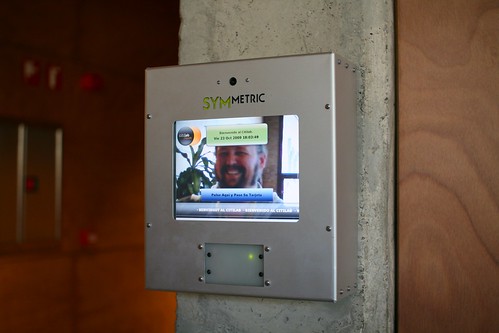My (messy) notes from Ben Cerveny's talk at Urban Labs which was organized by Citilab (Cornella, near Barcelona)

The talk was entitled "The city as a platform: computational systems for urban society" and the basic take-away was the proposition to see the city as an Operating System.
Ben is interested in how to make urban phenomena legible and feed them back into people's experience. Which is why he works with Stamen that he describes as a data viz agency. In other words, representations that make visible these invisible complexities to give people a tool to visualize them.
He recently started Vurb (a pun on "verb" and "urban") as a follow-up to his previous venture, the "Playground Foundation" in Amsterdam. In this previous project, he was interested in how to build an infrastructure in a city to allow a new sort of play... that take advantage of behavior patterns, computational resources, create new meaning of play and may have a transformational effect... turned today into VURB... which is interested in going beyond play.
He reminded us that the city is already shaped by information as shown by a picture of the first newspaper in amsterdam "amsterdamsche courant". BUT what is new: citizens are now information makers and the city is an aggregation of an enormous quantity of data (from plumbing infrastructures to digital photographies and GPS) that reflects the individual expressions of all the residents... and can be perceived now in its entirety.
What does this produce? while 20th century cities were consumables, 21th century cities will be collaboratively produced, no longer to-down but completely emergent... a bit like this evocative picture of the "New Babylon" by Constant Nieuwenhuys:

All of this lead to this idea of an operating systems for the built environment The various layers of the urban stack are differentially accessible to citizen input:
- sensor networks: not so much
- dynamic infrastructural services
- collaborative modeling: everybody is expressing their aspiration for the city, this is captured in a software model that represents a parallel state: the "cloud city", a set of information that is dynamic, active and aggregated... almost the spirit of the city... the idea that all of the human information and the history of the city lives in a dataset that can be used in different circumstances
We can then have a real-time model of urban scale space: it reflects a politics of a situation, a model does not reflect the entire reality. What type of model do we want to represent the city? Ben claims that we don't want one, we want a thousands! like web-services... there are going ways to bring models on space. The other side of the model is who is in the model, who takes advantage of the model: social networks are the inhabitants, which leads to massively multi-participant models... like an offline game.
Ben drew a parallel between urban planning and game design... the "secret school of learning interaction design" (as it teaches to design for users who do not read manuals, teaches how to make people learn new things progressively... or WoW status aggregation is twitter avant la lettre)

Another thing that I found interesting in his talk was this comment about Barcelona:
"I'm interested in looking at barcelona on the Google maps... look at how the barrio gotico is messy and then you see the grid... look at the boundaries... they look as if you could move a slider to accelerate the transition between the messy old city and the grid"